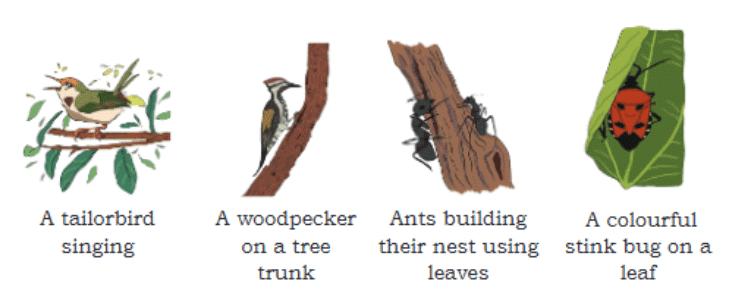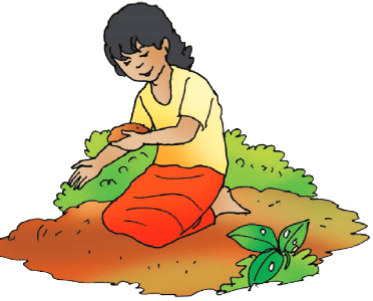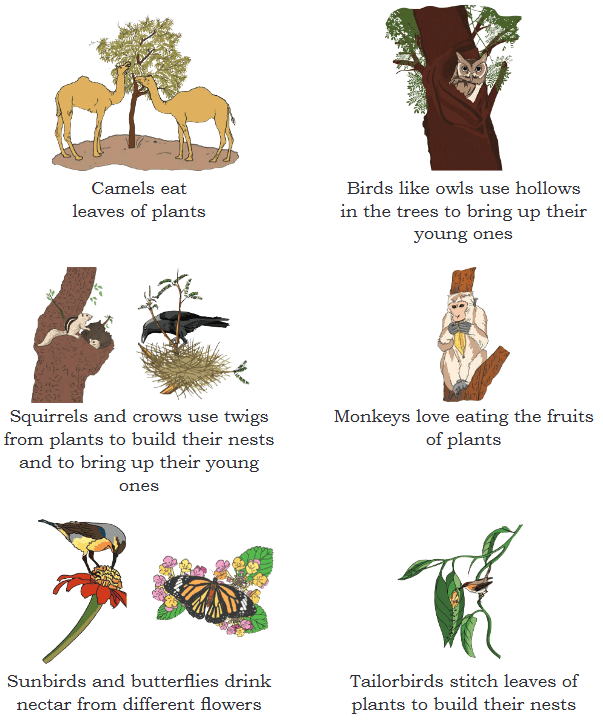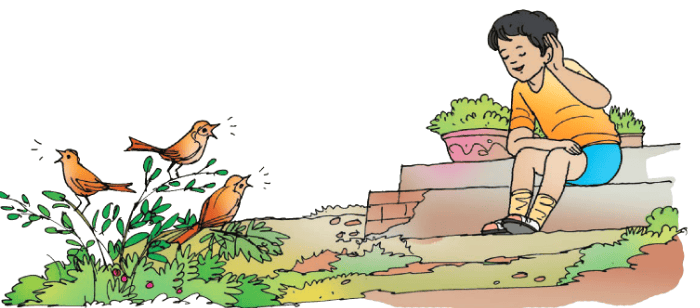Plants and Animals Live Together Chapter Notes | EVS Class 3: The World around us (Our Wondrous World) PDF Download
| Table of contents |

|
| Introduction |

|
| Plants and Animals Live Together |

|
| Life in the Soil |

|
| Points to Remember |

|
| Difficult Words |

|
Introduction
Have you ever noticed how birds, insects, and animals interact with plants around us? Plants provide food, shelter, and a safe space for many creatures. Birds build their nests in trees, insects hide among leaves, and squirrels use twigs to make cozy homes. Even monkeys love to snack on delicious fruits! Just like humans rely on nature, plants and animals also depend on each other to survive. Let’s explore how they live together in harmony!
Plants and Animals Live Together
The chapter "Plants and Animals Live Together" shows the relationship between plants and animals. It shows how animals depend on plants for food and shelter. The chapter also explains the importance of soil.


Life in the Soil
 Soil is the topmost layer of the Earth’s surface. It is made up of tiny pieces of broken rocks, old leaves, roots, stems, and animals like insects. Many insects and other creatures live in the soil. Some are big, while others are too small to see.
Soil is the topmost layer of the Earth’s surface. It is made up of tiny pieces of broken rocks, old leaves, roots, stems, and animals like insects. Many insects and other creatures live in the soil. Some are big, while others are too small to see.  Insects like ants, termites, small beetles, and grasshoppers live in the soil. When the soil is wet, creatures like earthworms and millipedes may appear. The soil supports plants that grow and provide food and shelter for many animals.
Insects like ants, termites, small beetles, and grasshoppers live in the soil. When the soil is wet, creatures like earthworms and millipedes may appear. The soil supports plants that grow and provide food and shelter for many animals.


- Camels eat plant leaves to survive in deserts.
- Birds and animals use twigs to make nests.
- Butterflies drink nectar from different flowers.
- Tree hollows provide a safe space for birds like owls to nest.
- Monkeys love eating the fruits of plants.
- Tailorbirds use plant leaves, which they stitch together to build their nests.
- Bats and leopards use the branches of trees to rest and for shelter.
- Caterpillars eat the leaves of plants.

- Different types of birds make different sounds. Birds can be identified by their sound.
Points to Remember
- Plants and animals depend on each other: Animals depend on plants for food, shelter, and nesting.
- Soil supports life: It provides a space for insects and plants. Healthy soil is good for plants and animals.
- Plants play a role in the food chain: Animals like camels, monkeys, and caterpillars depend on plants for food.
- Animals live in trees and plants: Birds, squirrels, and leopards use trees for nesting and living.
- Birds can be identified by their sounds: Each bird has a unique sound, and birds can be identified by their sounds.
Difficult Words
- Interdependent – Relying on each other for survival and support.
- Hollow – A space inside a solid object, like a hole in a tree.
- Stitch – To sew or join together, like tailorbirds using leaves to make nests.
- Termites – Small insects that feed on wood and live in colonies.
- Nectar – A sweet liquid produced by flowers that attracts birds and insects.
- Munch – To chew or eat something steadily, like a caterpillar eating leaves.
- Organic matter – Decaying plants and animals that help improve soil quality.
|
30 videos|128 docs|14 tests
|
FAQs on Plants and Animals Live Together Chapter Notes - EVS Class 3: The World around us (Our Wondrous World)
| 1. What are the different ways plants and animals depend on each other in nature? |  |
| 2. Why is it important for plants and animals to live together? |  |
| 3. How do animals help in the growth of plants? |  |
| 4. What role do humans play in the relationship between plants and animals? |  |
| 5. Can you give examples of specific plants and animals that live together and depend on each other? |  |




















